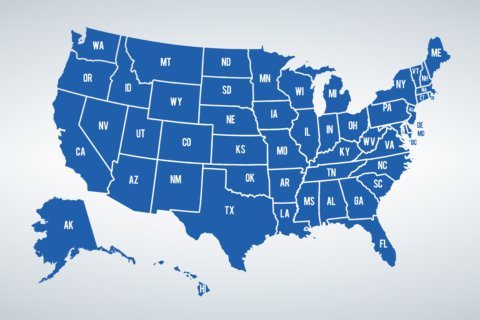The number of Americans filing for unemployment benefits fell last week, but the total number of those collecting benefits rose to its highest level in almost three years.
The Labor Department reported Thursday that applications for jobless claims fell by by 15,000 to 227,000 for the week of Oct. 19. That’s less than the 241,000 analysts forecast.
Weekly applications for jobless benefits are considered a proxy for U.S. layoffs.
Continuing claims, the total number of Americans collecting jobless benefits, rose by 28,000 to 1.9 million for the week of Oct. 12. That’s the most since November 13, 2021.
The rising level of continuing claims suggests that some who are receiving benefits are finding it harder to land new jobs. That could mean that demand for workers is waning, even as the economy remains strong.
Still, the four-week average of continuing claims is only as high as it was this summer, and not terribly concerning yet, analysts say.
“The level of continuing claims is rising too, a not-too-alarming sign of a slowing economy, but there is no sign of a crash in employment or a surge of layoffs,” economists for High Frequency Economics wrote in a note to clients. “The labor market is softening but not imploding.”
In response to weakening employment data and receding consumer prices, the Federal Reserve last month cut its benchmark interest rate by a half of a percentage point as the central bank shifted its focus from taming inflation toward supporting the job market. The Fed is trying to pull off a rare “soft landing,” whereby it brings down inflation without tipping the economy into a recession.
It was the Fed’s first rate cut in four years after a series of increases starting in 2022 that pushed the federal funds rate to a two-decade high of 5.3%.
Inflation has retreated steadily, approaching the Fed’s 2% target and leading Chair Jerome Powell to declare recently that it was largely under control.
Earlier this month, the government reported that U.S. inflation reached its lowest point since February 2021.
During the first four months of 2024, applications for jobless benefits averaged just 213,000 a week before rising in May. They hit 250,000 in late July, supporting the notion that high interest rates were finally cooling a red-hot U.S. job market.
In August, the Labor Department reported that the U.S. economy added 818,000 fewer jobs from April 2023 through March this year than were originally reported. The revised total was also considered evidence that the job market has been slowing steadily, compelling the Fed to start cutting interest rates.
Despite some signs of labor market slowing, America’s employers added a surprisingly strong 254,000 jobs in September, easing some concerns about a weakening job market and suggesting that the pace of hiring is still solid enough to support a growing economy.
The four-week average of claims, which softens some of the weekly volatility, rose by 2,000 to 238,500, the Labor Department said Thursday.
Copyright © 2025 The Associated Press. All rights reserved. This material may not be published, broadcast, written or redistributed.







